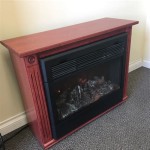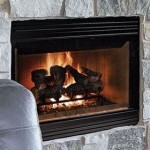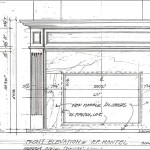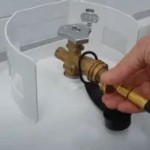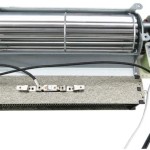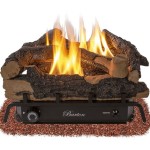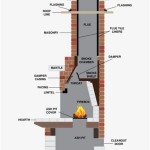Wood Burning Stoves: Finding the Right Fit for Your Small Fireplace
Many homeowners with existing fireplaces find themselves drawn to the efficiency and ambiance of wood-burning stoves. Replacing an open fireplace with a wood-burning stove can significantly improve heating efficiency, reduce emissions, and provide a more controlled and enjoyable fire experience. However, successfully integrating a wood-burning stove into a smaller fireplace space presents its own set of considerations. Careful planning and selection are crucial to ensure the stove fits safely, operates effectively, and meets all relevant building codes.
The primary challenge lies in finding a stove model that fits within the fireplace opening while also possessing adequate heating capacity for the room. Overcrowding the fireplace can lead to poor airflow, overheating, and potential fire hazards. Conversely, a stove that is too small may not provide sufficient heat. Therefore, understanding the dimensions of the fireplace and the heating requirements of the space are the first steps in this process.
Before embarking on the selection process, thoroughly measure the fireplace opening. Pay close attention to the width, height, and depth. Also, note the dimensions of the firebox itself, as this is where the stove will primarily reside. Leave ample clearance around the stove for proper ventilation and heat dissipation. Consult the stove manufacturer's specifications for recommended clearances to combustibles. These clearances are legally mandated and vary depending on the specific stove model. Failure to adhere to these clearances can result in a house fire.
Choosing the Right Size Wood Burning Stove
Once the fireplace dimensions are known, the next step is to determine the appropriate size wood-burning stove. Stoves are typically rated in British Thermal Units (BTUs) per hour, which indicates their heat output. The required BTU rating depends on several factors, including the size of the room to be heated, the insulation level of the house, the climate zone, and the number of windows and doors. A general rule of thumb is to estimate 5,000 to 6,000 BTUs per hour for every 250 square feet of living space. However, this is just a starting point, and a professional heating specialist can provide a more accurate assessment based on the specific characteristics of the home.
For small fireplaces, it is usually necessary to choose a smaller stove model with a lower BTU output. This limits the selection but does not preclude finding an efficient and effective heating solution. Many manufacturers offer stoves specifically designed for smaller spaces. These stoves often feature compact designs and lower BTU ratings without sacrificing efficiency. Consideration should also be given to stoves that offer a wide range of controllable heat output, allowing for fine-tuning of the heating level to suit the specific needs of the room.
The firebox size of the stove is also an important factor. A larger firebox allows for longer burn times, reducing the frequency of refueling. However, a larger firebox also requires more space. If space is limited, a smaller firebox may be necessary, even if it means more frequent refueling. Some modern stoves feature advanced combustion technology that allows for efficient burning of smaller amounts of wood, maximizing heat output even from a smaller firebox.
Ensuring Proper Ventilation and Chimney Connection
Adequate ventilation is paramount for the safe and efficient operation of a wood-burning stove. The stove must be properly connected to the existing chimney flue. It is essential to have the chimney inspected and cleaned by a certified professional before installing the stove. A dirty or damaged chimney can impede airflow, leading to smoke backdraft, carbon monoxide poisoning, and chimney fires.
The diameter of the flue pipe connecting the stove to the chimney must match the stove's outlet diameter. Using a smaller diameter pipe can restrict airflow and reduce efficiency. In some cases, it may be necessary to install a new chimney liner to ensure proper ventilation. A stainless steel chimney liner is typically recommended, as it is durable and resistant to corrosion. The liner should be sized to match the stove's flue requirements.
When installing the flue pipe, ensure that it is properly sealed and sloped upwards towards the chimney. This prevents creosote buildup and allows for proper draft. Avoid sharp bends in the flue pipe, as these can restrict airflow. All connections should be secure and airtight. A professional installer will be able to properly size and install the flue pipe to meet all relevant building codes and safety standards.
Meeting Building Codes and Safety Standards
Installing a wood-burning stove is subject to local building codes and regulations. Before installing a stove, obtain the necessary permits from the local building department. This typically requires submitting plans and specifications for the stove and installation. A building inspector will then inspect the installation to ensure that it meets all applicable codes.
Building codes typically address issues such as clearances to combustibles, chimney requirements, and hearth protection. Hearth protection is essential to prevent sparks and embers from igniting combustible materials on the floor. The hearth must extend a specified distance beyond the front and sides of the stove. The size and material of the hearth are typically dictated by the building code.
Carbon monoxide detectors are mandatory in homes with wood-burning stoves. These detectors should be installed in accordance with the manufacturer's instructions and tested regularly. Carbon monoxide is a colorless, odorless, and deadly gas that can be produced by improperly functioning stoves. Regular maintenance, including chimney cleaning and stove inspections, is crucial to prevent carbon monoxide poisoning.
Selecting and installing a wood-burning stove that fits a small fireplace requires careful planning, precise measurements, and adherence to building codes. It is often advisable to consult with a qualified professional to ensure a safe and efficient installation.

Hollie Berries Salamander Stoves Small Wood Burning

Can You Install A Wood Stove In Fireplace Direct Stoves

Painted Hobbit Stove Installed In A Fireplace Salamander Stoves

Small Stoves For Household Fireplaces Archives Salamander

Monochrome Maison Small Wood Burning Stoves Salamander

The Hobbit Stove Eco Design Approved Salamander Stoves

6 Spectacular Small Log Burners With Remarkable Character Stovax Gazco

Wood Stoves For Small Spaces Warmth And Functionality Panadero

A Stove Or Wood Burner For An Extension Conservatory

How Much Does Fitting A New Log Burner Cost In 2024 Bonfire
Related Posts

